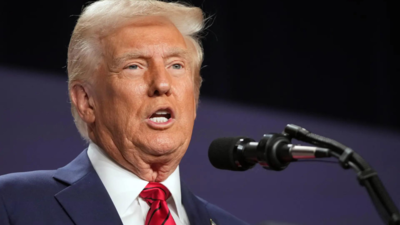As President Donald Trump this weekend opened what could become a global trade war, a growing number of countries, including America’s closest allies, are forging their own economic partnerships without the US. If Washington is putting up a higher fence around its trade, other nations are lowering theirs.
On Saturday, Trump ordered 25% tariffs on Mexico and Canada and 10% tariffs on China. Europe, Trump promised in recent days, was next. By punishing longtime allies with tariffs, Trump is encouraging other nations to form trading blocs that exclude the US.
In just the last two months, the European Union concluded three new trade deals. The bloc, completing negotiations that started 25 years ago, reached a deal with four South American nations in Dec to create one of the world’s largest trade zones, linking markets with 850 million people. Two weeks later, the EU struck a deal with Switzerland. Then last month, it bolstered trade ties with Mexico.
This month, Indonesia became the 10th nation to join Brics, a group including Brazil, Russia, India, China and South Africa that was established in 2009. This club now includes half the world’s population and more than 40% of its total economic output. Another eight countries, including Thailand and Uganda, are on path to becoming full partners.
In May, the 10-country Asean will meet the six West Asian nations that make up the Gulf Cooperation Council. The summit’s host, Malaysia, has invited China too. Trade and investment between Asean and India is deepening as well.
Britain, too, recently christened a new partnership. In Dec, it officially joined the trans-Pacific trade bloc, a group that includes Australia, Canada, Japan, New Zealand, and others. London is also looking to repair its frazzled economic relationship with the EU.
The global economy is increasingly becoming “one that is characterised by ever deepening trade ties excluding the US,” said Jacob Kirkegaard, a senior fellow in Brussels at the Peterson Institute for International Economics. The trend is not necessarily anyone’s preference, he said, but the arrangements offer a “second best” option given America’s rejection of a more open economic order.
At the same time, economic power around the globe has been shifting. China has emerged as an economic superpower.
India’s status as a world economic power has grown as well. It surged past Britain to become the world’s fifth-largest economy in 2022. “India’s trade expanded across the geopolitical spectrum,” an update on trade released last week by McKinsey Global Institute reported. And India is on the path to becoming a leading exporter of digital services, which are not subject to tariffs.
Delhi flexed its economic independence by refusing to go along with Western sanctions against Russia. And now it and China are the biggest buyers of cheaper Russian oil. Saudi Arabia and the UAE have also shifted attention to India and China, increasing energy exports to meet the growing demand.
Global trade is still growing, but it is being reconfigured. “It’s not the end of the global trading system,” Kirkegaard said. “This is leading to a different trading system.” Trade, it turns out, is like water flowing through a stream strewn with rocks. When it can’t go through them, it goes around them. NYT


